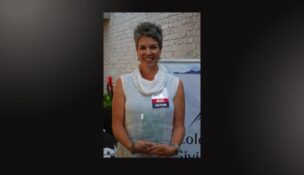Steps to solve the senior safety puzzle
Falls cost $10 billion a year, and most happen at home
Eric Peterson //October 13, 2015//


Steps to solve the senior safety puzzle
Falls cost $10 billion a year, and most happen at home
Eric Peterson //October 13, 2015//
Erik Listou and Louie Delaware connected on a shared area of expertise and concern in 2011 – home safety for seniors – and decided to co-author a book on the topic.
“As we started getting into it, we realized there’s a lot more to this puzzle than meets the eye,” Delaware says. Fellow home-safety guru Listou says the “Silver Tsunami” of aging baby boomers necessitates a new cross-industry paradigm for home safety.
That was the kernel that grew into the Louisville-based Living in Place Institute.
The book is still in the works, but Listou and Delaware’s startup encompasses educational workshops for construction and home-care assistants that result in a Certified Living in Place Professional, or CLIPP.
Living in Place’s checklist hits on 100 different features of a home. All shower rods should double as heavy-duty handrails, for example, and shiny countertops and floors can cause “an instant of blindness” and should be avoided.
“Let’s make all homes safe for everyone,” Listou says. The coming CLIPP workshops – the first is in October in Aurora – are meant to educate and connect professionals in real estate, construction, home care and medicine.
Home inspectors are a primary target. There are more than 4 million inspections a year in the U.S. Living in Place has also gotten a stamp of approval from the American Occupational Therapists Association and is looking to do the same with other industry groups.
Another piece of the puzzle: Living in Place is working with such manufacturers as Toto Toilets, Rev-A-Shelf, and Garaventa Lift to develop safer products. There’s a big return on investment: Accidental falls cost $10 billion a year, and half of them happen at home.
Delaware says his parents are perfect examples for the need for Living in Place. “They’re 1,000 miles away, in their 90s, in a house built in the 1920s,” he says. “That’s basically a safety hazard.”
He says plenty of others are in the same boat: They’re adult children who aren’t primary caregivers. Rather, Delaware calls them “primary worriers.” By 2019, he and Listou plan to have 3,500 CLIPPs helping ease their concerns by making homes safer for everyone in Colorado and beyond. cb
Online: www.livinginplaceinstitute.org
























